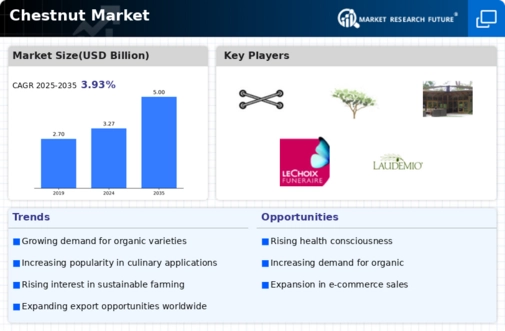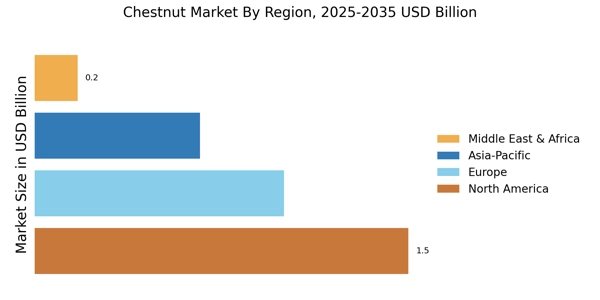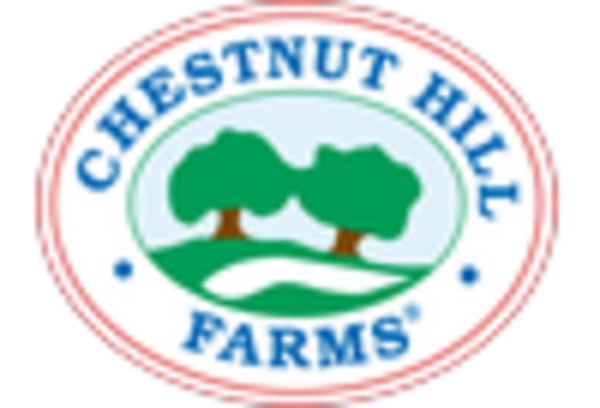Expansion of Snack Food Segment
The Chestnut Market is witnessing a significant expansion in the snack food segment, driven by changing consumer snacking habits. As people seek healthier snack alternatives, chestnuts are emerging as a popular choice due to their nutritional profile and unique flavor. The market for chestnut snacks, including roasted and flavored varieties, has seen a growth rate of approximately 12% annually. This trend is further supported by the increasing availability of chestnut-based snacks in retail outlets and online platforms. As the demand for innovative and health-oriented snack options continues to rise, the Chestnut Market is well-positioned to capitalize on this burgeoning segment.
Culinary Versatility of Chestnuts
The Chestnut Market benefits from the culinary versatility of chestnuts, which can be utilized in a variety of dishes across different cuisines. From traditional roasted chestnuts to innovative uses in gourmet recipes, the adaptability of chestnuts appeals to chefs and home cooks alike. This versatility is supported by data showing that chestnut consumption has increased by 10% in the last year, particularly in regions where culinary experimentation is encouraged. As more consumers explore diverse cooking methods, the Chestnut Market is likely to see a surge in demand for chestnut-based products, further solidifying its position in the food sector.
Growing Interest in Plant-Based Diets
The Chestnut Market is poised to benefit from the increasing interest in plant-based diets. As more individuals adopt vegetarian and vegan lifestyles, the demand for plant-based protein sources is on the rise. Chestnuts, being rich in nutrients and low in fat, present an appealing option for those seeking alternatives to meat. Recent surveys indicate that approximately 30% of consumers are actively seeking plant-based options, which could lead to a significant uptick in chestnut consumption. This trend not only enhances the visibility of the Chestnut Market but also encourages product development that caters to the evolving dietary preferences of consumers.
Rising Demand for Natural Ingredients
The Chestnut Market is experiencing a notable increase in demand for natural and organic ingredients. Consumers are becoming more health-conscious, seeking products that are free from artificial additives and preservatives. This trend is reflected in the growing popularity of chestnuts, which are perceived as a wholesome and nutritious option. In recent years, the market for chestnut-based products, such as flour and snacks, has expanded significantly, with sales figures indicating a rise of approximately 15% annually. This shift towards natural ingredients is likely to drive innovation within the Chestnut Market, as manufacturers strive to meet consumer preferences for clean-label products.
Sustainability and Environmental Awareness
The Chestnut Market is likely to gain traction due to the growing emphasis on sustainability and environmental awareness among consumers. Chestnut Market trees are known for their ability to thrive in diverse climates and contribute positively to soil health. As consumers become more environmentally conscious, they are inclined to support products that align with sustainable practices. This shift is evident in the increasing number of brands that promote chestnuts as a sustainable food source. Market data suggests that sales of sustainably sourced chestnut products have risen by 20% in the past year, indicating a strong consumer preference for environmentally friendly options within the Chestnut Market.


















Leave a Comment